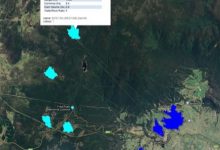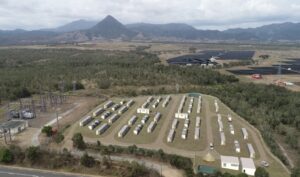Clean Energy Regulator data suggests that Australia will install more than 15GW of new wind and solar PV over 2018-20, which puts Australia on track to reach 50 per cent renewable electricity and meet its Paris emissions targets in 2024/25.
Additional transmission and storage will be required to support variable wind and PV. The NSW Government is getting ahead of the curve by publishing a roadmap of pumped hydro storage, including site-searching contributions from ANU.
ANU has produced detailed new information about pumped hydro energy storage opportunities in NSW, including potential sites at mines and at existing reservoirs. Information is available for download at the ANU website.
Included in the new data is a selection of about 1200 promising (“Class A”) upper and lower reservoir pairs, which is about 100 times more than required to support 100% renewable electricity in NSW. These can be visualized using kmz files on the ANU website in conjunction with Google Earth, or directly using Google maps.
Specifications of the NSW Class A pairs are: minimum head = 300m; reservoir wall height for both upper and lower reservoirs = 40m; minimum W/R ratio = 3 (where W = volume of stored water and R = volume of rock in the reservoir wall); minimum reservoir volume = 1 Gigalitre (corresponding approximately to 1 GWh of energy storage for 400m head); maximum distance between upper/lower reservoir pairs = 10km and minimum H/D ratio = 1:10 (where H = head and D = horizontal distance between upper and lower reservoirs).
ANU will soon publish corresponding information for South Australia, where 240 Class A reservoir pairs were found. ANU plans to extend the reservoir pair searching to all states. ANU is also nearing completion of low-resolution site-searches of Europe and the USA.
ANU team is made upon Andrew Blakers, Cheng Cheng, Bin Lu, Anna Nadolny, Matthew Stocks and Ryan Stocks.









